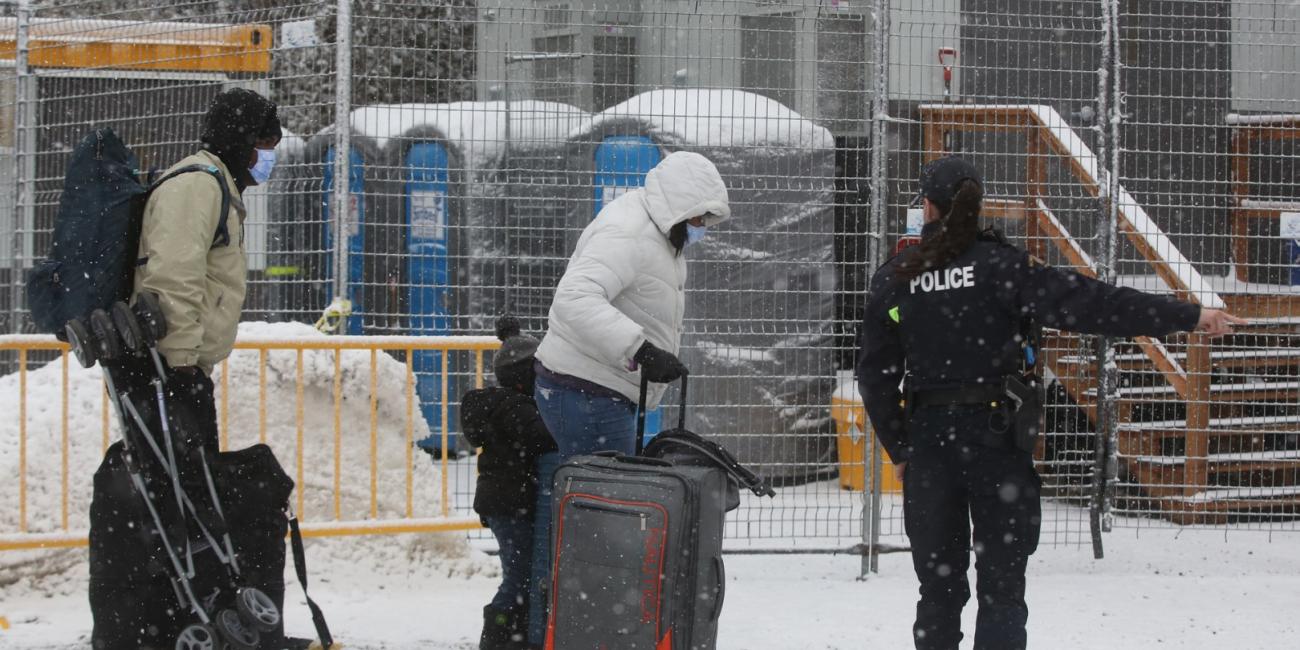
Australia traveller data not a precise measure of migration: experts
- Published on August 29, 2025 at 09:12
- 4 min read
- By Dene-Hern CHEN, AFP Australia
"New figures reveal an explosion in migration. More than 1,500 people are arriving in Australia every day," says an August 18 Facebook post from Ben Fordham, a popular radio host in Sydney.
Fordham also said during a segment of his show that "every single day, Australia is now taking in 1,544 new people," citing recent figures released by the ABS (archived link).
"Now that's the equivalent of five, fully loaded Boeing 787 Dreamliners -- day after day, week after week."

Multiple conservative groups and right-wing influencers reshared the figure, which also spread on Instagram and TikTok.
Many of the groups have members who frequently lambast Prime Minister Anthony Albanese's centre-left Labor Party over its migration policy, with some linking the issue to the country's housing crisis.
When asked how the figure was calculated, Fordham's radio show told AFP in an August 20 email that it had subtracted the total number of "permanent and long-term departures" from that of "permanent and long-term arrivals" for the first six months of 2025. Then, it divided the result by the number of days from January to June.
But the ABS said in an August 21 statement that using Overseas Arrivals and Departures (OAD) data "may lead to inaccurate conclusions on migration" (archived link).
Border crossings
According to the bureau, the figures are "a count of border crossings rather than migration" and are best used to "understand patterns in traveller movements, such as tourism trends and seasonal travel".
"For example, this means a person who has been living in Australia for three years on a temporary visa, and travels overseas multiple times, can count as a long-term visitor arrival many times," the ABS said, adding that OAD data "should not be used to measure migration or population change".
To be counted as a migrant and added to Australia's population, someone must be in the country for 12 months or more within a 16-month period (archived link).
"Historically, net permanent and long-term movements from Overseas Arrivals and Departures have been consistently higher than actual Net Overseas Migrations," the ABS said in its statement.
The latest migration data for Australia were published in June. ABS announced the net overseas migration figure for the year ending December 2024 was 340,800 people -- roughly 933 per day (archived link).
Migration figures for 2025 have not yet been published, the agency said, adding that the next release is scheduled for September 18.
Following ABS's statement, Fordham's show pointed out that the government's Centre for Population says border crossings are "an early indicator of future migration flows" (archived link).
"We await the release of the final data in September," the show told AFP in an August 21 email.
'Quite misleading'
Peter McDonald, professor emeritus of demography at Australian National University, said the ABS stopped using the net number of permanent and long-term arrivals to measure migration more than 20 years ago because they are "really quite misleading" (archived link).
"The people who still use those numbers are doing so because they are opposed to migration and the number -- the net permanent/long-term figure -- is always well above the ABS's net overseas migration number," he told AFP in a series of phone interviews from August 22 to 26.
He gave the example of a businessman who is an Australian resident and goes overseas three times a year, returning on each occasion.
"That counts as three arrivals. But because he's not away for very long, for migration it counts as zero," McDonald said.
He also refuted the claim that more migrants have arrived since Albanese's term began in 2022 -- a frequent accusation from the opposition right-wing Liberal Party and its supporters.
"Not true -- not if you average it over time," he said.

McDonald explained that with the Australian border closed during the Covid-19 pandemic, international students, temporary skilled workers and working holidaymakers -- young foreigners arriving for short-term work and travel -- could not enter (archived link).
"So when the border was opened, there was a backlog of maybe two and a half years of people who wanted to come to Australia," he said, calling the larger numbers a "temporary phenomenon" as those visas will expire in the next few years.
"We are going to see that in the next couple of years, the number of departures is going to rise and net migration is going to fall."
McDonald added that much of the debate is over temporary migrants, while Australia's Permanent Migration Program has maintained an average of about 190,000 each year for the past 15 years throughout both Labor and Liberal governments (archived link).
'Making migrants scapegoats'
Australia in 2023 unveiled plans to slash the number of migrants arriving in the country, hoping to curb the post-pandemic surge and address voter anger at the rising cost of living (archived link).
But migration expert Karen Block said many industries in Australia, particularly in the nursing and care sectors, still rely heavily on migrants (archived link).
She added that the debate over OAD data is a "red herring" for those seeking to pin the country's property crisis solely on migrants.
"The numbers are complex, and focusing on the numbers is not really telling us a lot about what the issues are," Block told AFP on August 21. "This is another way of making migrants scapegoats for societal problems that are really complicated."
The Australian Associated Press fact-checked similar claims misrepresenting OAD data as net migration to the country. The Australian Broadcasting Corporation's Media Watch, which analyses and critiques the country's press, also covered the issue (archived here and here).
AFP has fact-checked other misleading claims about migration in Australia here, here and here.
Copyright © AFP 2017-2025. Any commercial use of this content requires a subscription. Click here to find out more.
Is there content that you would like AFP to fact-check? Get in touch.
Contact us




